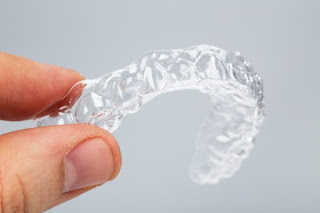 Esthetically dental veneers can fix damaged and stained teeth, providing you with a perfect solution that gives you back a beautiful white smile. Dental veneers are so close to the original teeth that once you have had them placed, you will forget which teeth have been augmented using the porcelain veneers. They look, feel, and act exactly like your original teeth. To do this the thin strips of porcelain, which the dental veneers consist of, have to take on some of the qualities of the naturally occurring enamel. They look exactly the same and are shade matched so that they are a match for the surrounding teeth. They also have the same hardiness. Enamel is the bodies hardest substance to withstand the rigors of chewing and biting, in a normal dietary routine. The veneers are also extremely hard to perform these same functions. On the flip side, both veneers and enamel, can be damaged if you engage in activities that put the teeth at risk for breaking, chipping, or cracking.
Esthetically dental veneers can fix damaged and stained teeth, providing you with a perfect solution that gives you back a beautiful white smile. Dental veneers are so close to the original teeth that once you have had them placed, you will forget which teeth have been augmented using the porcelain veneers. They look, feel, and act exactly like your original teeth. To do this the thin strips of porcelain, which the dental veneers consist of, have to take on some of the qualities of the naturally occurring enamel. They look exactly the same and are shade matched so that they are a match for the surrounding teeth. They also have the same hardiness. Enamel is the bodies hardest substance to withstand the rigors of chewing and biting, in a normal dietary routine. The veneers are also extremely hard to perform these same functions. On the flip side, both veneers and enamel, can be damaged if you engage in activities that put the teeth at risk for breaking, chipping, or cracking.
For damaged teeth, dental veneers provide protection, augmenting the teeth so that the damage cannot spread further. When a tooth has been cracked, broken, or chipped, there is always the potential that the damage could continue to spread as pressure is put on the tooth. This pressure comes in the form of regular activities like biting and cannot be avoided. Using a dental veneer we can repair the damage, and the veneer will provide strength to the tooth that in turn prevents the damage from spreading. Similarly when a tooth is damaged there is always the potential that bacteria could make its way past the protective barrier of the enamel and into the inner part of the tooth, spreading an infection. The dental veneers prevent this from happening by effectively sealing the tooth in much the same way as the original enamel did.
Properly taken care of dental veneers can have a long lifespan. There are not definite answers as to just how long, based on the fact that the mouth changes and each individual has a unique set of circumstances. What we do know is that veneers typically will last between seven and thirty years and that how a person maintains their mouth has a lot to do with the longevity of them. Unforeseen occurrences like accidents can cause damage, as can gum diseases and other dental emergencies. However, as long as you maintain a good oral health routine, chances are that they will last well into old age.
Some of our patients wonder how, or if, they will need to alter their routine after having a veneer replacement. The simple answer to this question is no. Veneers require no extra maintenance than your natural teeth, which includes brushing twice per day, flossing regularly, and scheduling professional cleanings with us at least twice in the year. Other than this the only thing we suggest is to avoid the overuse of products that might stain your natural teeth. Since the dental veneer doesn't stain, you do not want to overly stain the teeth around it and make things look uneven.
 As an
As an